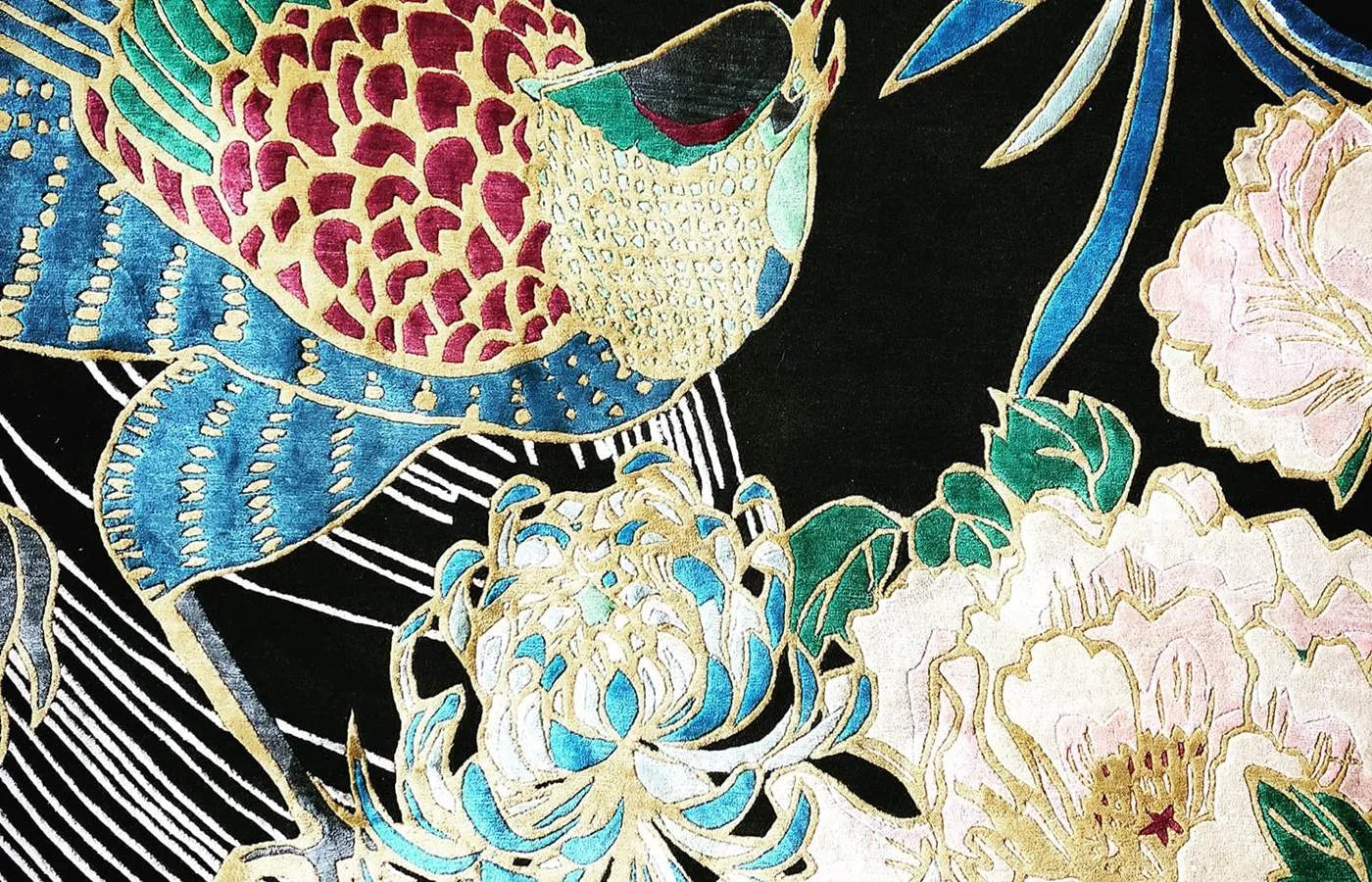It was during a trip to India to attend the 2016 Carpet Expo that Wendy had the idea to bring back some of the most beautiful rugs there to share with you. Buzzing with excitement she put her ideas down in this inspiration board. (Note ‘Raika‘ and ‘Govind‘ in there at the top). This seedling of an idea has grown into a new collection, ‘The Curated Collection’ which features rugs personally chosen by her on her travels. The rugs will reflect her style and her attention to detail, beauty, luxury and colour.
Inspiration in India 2016 – (spot Raika and Govind)
Falling in love with Raika she decided this would be the rug to launch The Curated Collection. When enquiring about getting a sample made up of this she asked about the people who made this rug and we were sent such a wonderfully detailed response we thought we’d publish it in full…
“The weavers are basically divided into two categories. Master weaver & regular weavers.
The master weaver is usually one who has been taught this art by his father who in turn learnt it from his father so and and so forth. He also has some farm land which he cultivates during the producing seasons. The master weaver has all the know how of how to setup the looms, prepare the warp & weft, setup the foundation for weaving , read the naqsha (graph) and direct the weavers, etc. He is the one who comes to our place , takes the raw materials, understands the designs , understands any special requirements , negotiates the price for the weaving of that rug, is responsible for quality & delays – basically he is a mini-entrepreneur. They are usually the richest people in their villages and have all amenities like fridges, satellite televisions, motorcycles in their homes. (This will not sound much to you but these basic amenities for us are a big deal to the 700 million odd people living in India villages)
The second category is the regular weavers who form the backbone of the rug weaving industry. They are generally women and some unemployed men who are looking for easy work right next to home. The women (both married & unmarried) are working to supplement the family income while their fathers/husbands/brothers work in the fields / tend cattle, etc. The men are those who either lack money to have their own farms, or are physically not fit enough to meet the demanding 10-12 hour shift in the scorching sun while working in the fields. Mostly anyone can start working as a regular weaver, the learning curve is not that steep. Their job is sitting on the looms and keep making knots as per the directions of the master weaver.
Apart from the weaving there are several other important aspects to rug making like making the yarn, dyeing the yarn, graph making, colouring the graph, washing & finishing the rug, etc.
Hope this answers your question !”
Well, it certainly did! We were also sent photographs of it being made up in its various stages (as seen below)…

Raika on the loom

Raika on the loom (further down the line)
You will see that the colours here are much more vibrant than the finished result. This is because it is washed and re-washed to create a softer, shinier and more muted rug. These before washing and after washing pictures of our sample show the difference.

The Raika rug washing process
The following pictures show the sheen.




The Raika Rug is made of wool and silk. The wool is sourced from nomadic desert sheep of the great Indian Thar desert. Life spent under the strong, hard sun means their wool becomes soft and shiny and is the perfect background for the gorgeous sari silk used for the motifs. The sari silk is made up of old saris, so is recycled & eco friendly.
It is hand knotted to 6/6 quality.
And that, ladies & gentlemen, is how you get from this…

Unwashed sample straight from the loom.
To this….

Finished Raika at The Pink House photoshoot.


